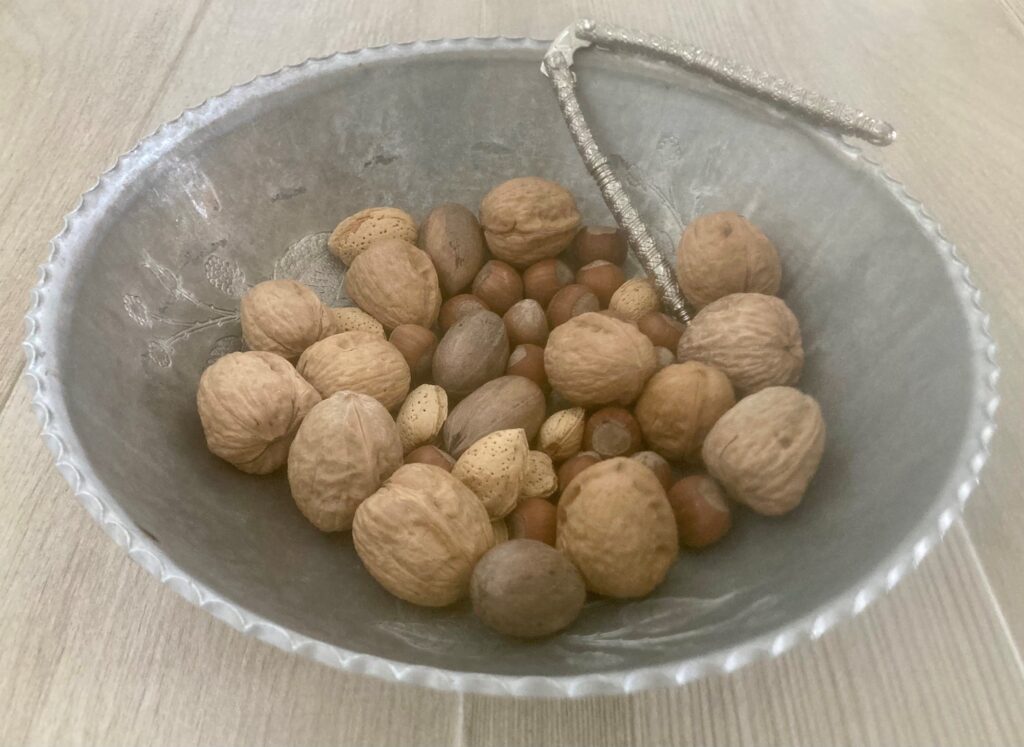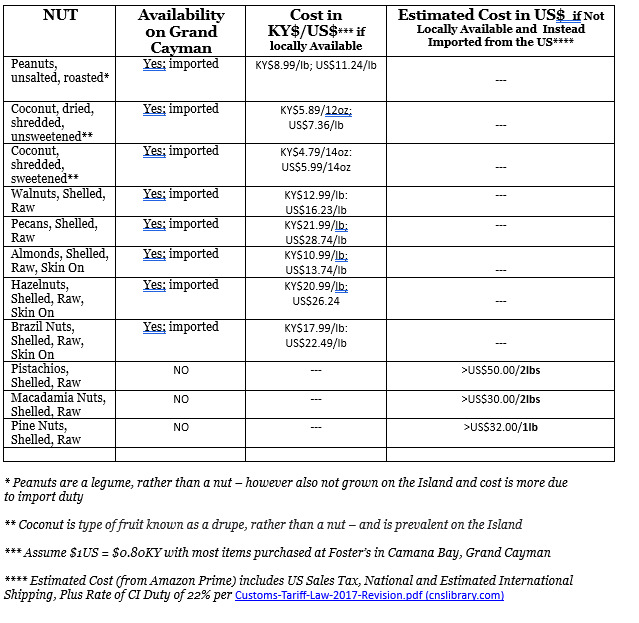(and What to Do When You Can’t Find or Afford Them)
by Anne Evans
This Baker has lived most of her life in California – all of it growing up, plus most of my adult life as well. Nuts were everywhere in California and certainly affordable. My Dad’s parents had Walnut and Almond Trees on their Farm in Walnut Creek, CA (on which they primarily grew grapes for wine production). California Pistachios (my older brother’s favorite) were abundant — although growing up in the 1960s we had to work to enjoy them by prying them out of their shell which was part of the fun. Pecans I learned about because my Dad’s Mother grew up in Texas, and pecans were always included in our Christmas Holiday Bowl of nuts in the shell along with a Nutcracker.

So were Brazil Nuts (which tormented me because they were so hard to crack!). Then there were the more exotic nuts, not so available and certainly more expensive in the 1960s and to date: Macadamia Nuts, Cashews and Pine Nuts. The latter were native to mother’s childhood cattle ranch home in Colorado, so every Christmas we would receive a package of raw pine nuts in the shell from her family. Just as for Pistachios, these itty-bitty pine nuts were supposed to be shelled before eating. As a youth, I was too impatient to do so and would just throw a handful into my mouth – shell and all!
Availability and Cost of Nuts on Grand Cayman vs Imported
On Grand Cayman Island, the diversity of nuts available is considerably less than what I had enjoyed in the US — and the cost is considerably more (this is dramatically true for nut butters as well). Take note of the table I have included at the end of this Blog reflecting “nut” availability, cost locally in KY$/US$, and cost including mark up in US$ for those that require importation.
As an example, my husband loves raw, unsalted, shelled pistachios which, while residing in the US, I would purchase regularly in 2 lb bags on Amazon Prime (for his consumption and for my baking) – i.e., Fiddyment Farms. As of August 2023, they are selling for US$39.99/2lb sack. Raw, unsalted, shelled pistachios are not available on the Island. If I buy those today from Amazon and then have them imported, that will add The Cayman Island’s Duty Fee Customs-Tariff-Law-2017-Revision.pdf (cnslibrary.com) of 22% (US$8.80) + our importer’s fees … so these pistachios will cost north of US$50.00/2lb sack. I am thinking perhaps Santa may be able to afford a bag this coming Holiday Season😊
What About Substituting Coconut?
Coconut is grown abundantly on these Islands, but is Coconut a Nut?
Despite its name, coconut is not a nut, but a type of fruit known as a drupe. (Ditto for the Peanut which, rather than being a nut, is actually a legume). Most people with tree nut allergies can safely eat coconut and its products without any symptoms of a reaction.
Coconut is considerably less expensive than any other “nut” here on Grand Cayman.
As a life-long Baker and additionally a life-long professional in science-oriented careers, I have found that I have a skill for analyzing, modifying, improving, and creating new variations on existing recipes. Check out these shortbread recipe variations that I think you will enjoy.
The first for “Royal Rum Walnut Shortbread” utilizes one of the more affordable imported nuts available on Grand Cayman.
The second is an adaptation of the former for use with Coconut, which will make the cookie more affordable to bake. Interestingly, as prevalent as coconut is on this Island, one of its key ingredients (i.e., unsweetened, dried coconut) is not produced locally on these Islands. That admitted, imported and affordable dried coconut is readily available. As the recipe suggests, the sweetness can be adjusted depending on your choice to substitute flaked sweetened coconut (Baker’s Angel Flake Sweetened Coconut) for the unsweetened dried coconut and or the Turbinado Sugar Coating.



One comment